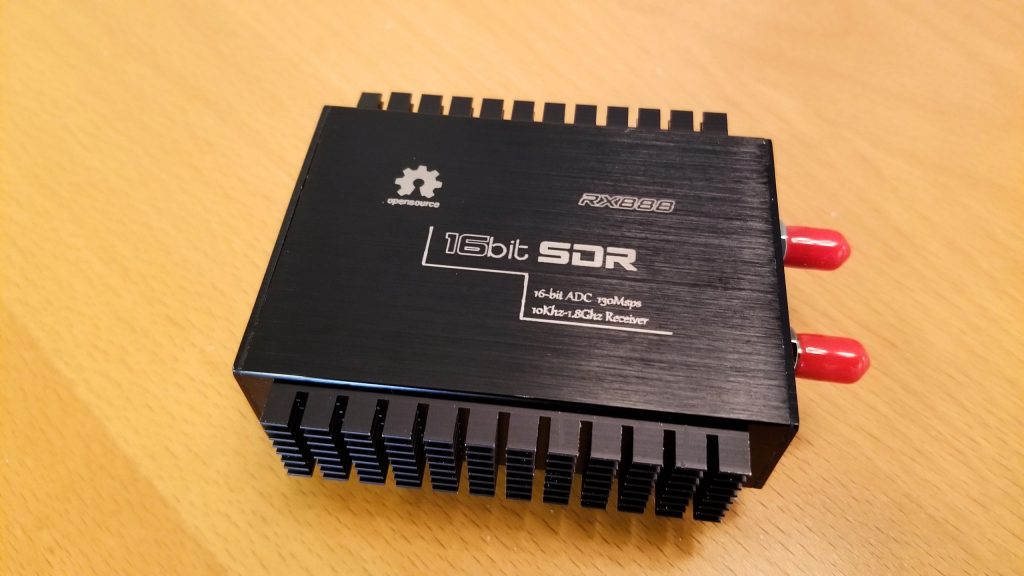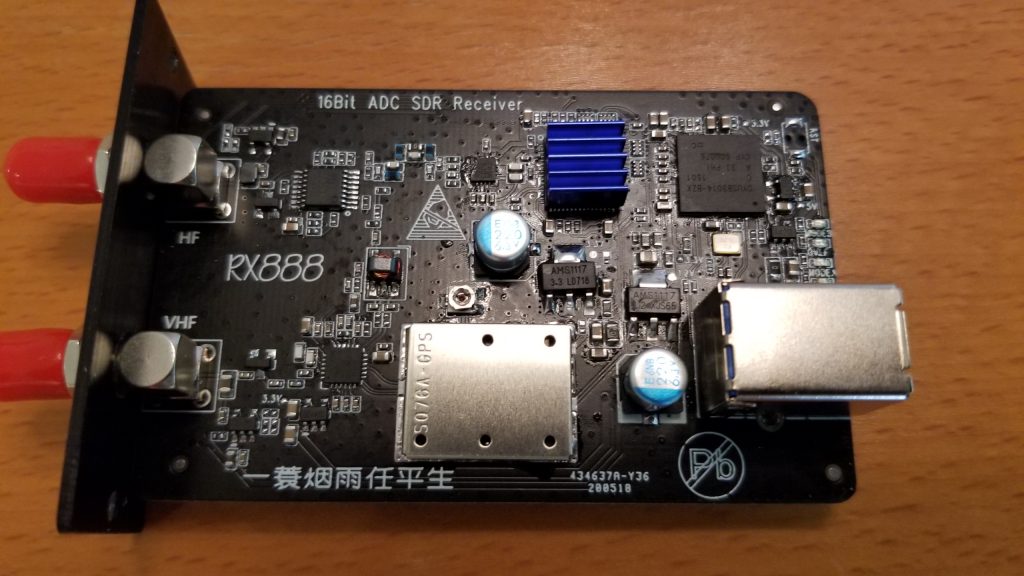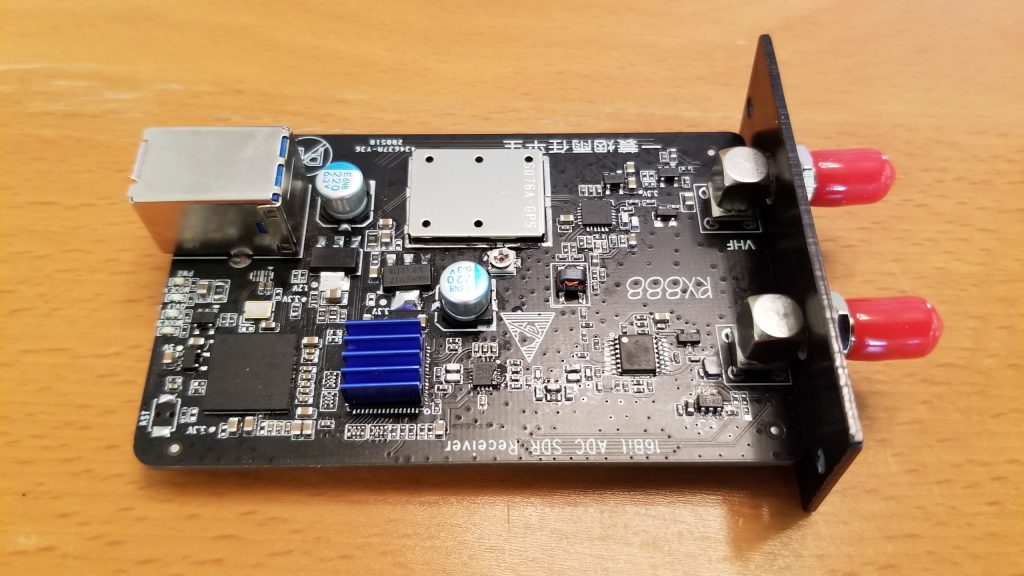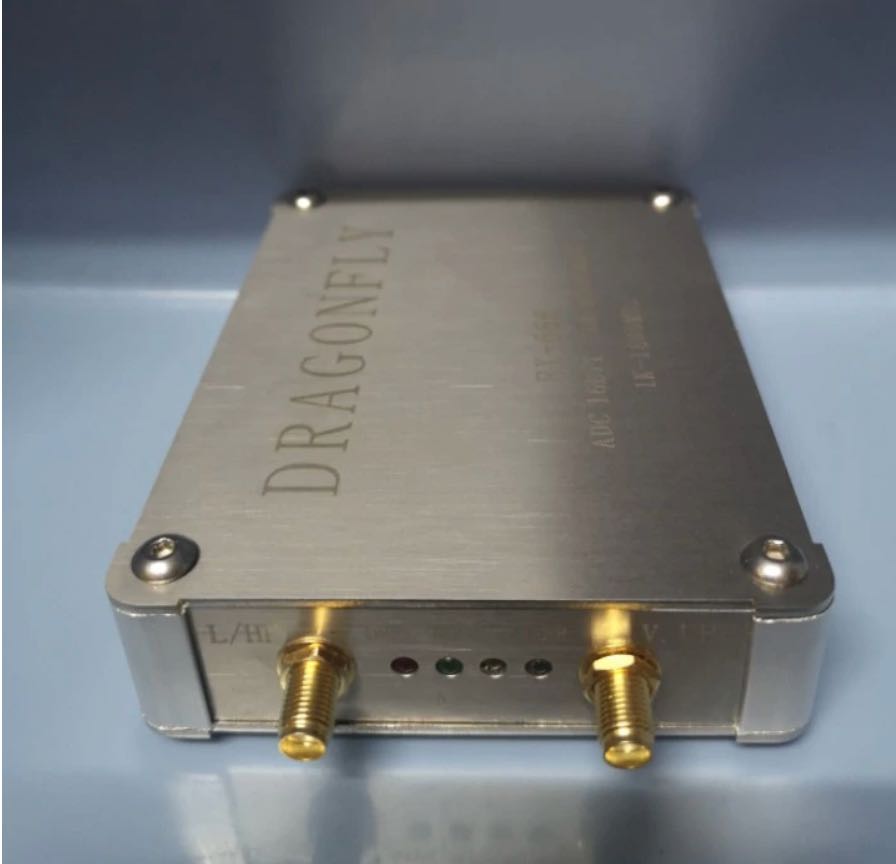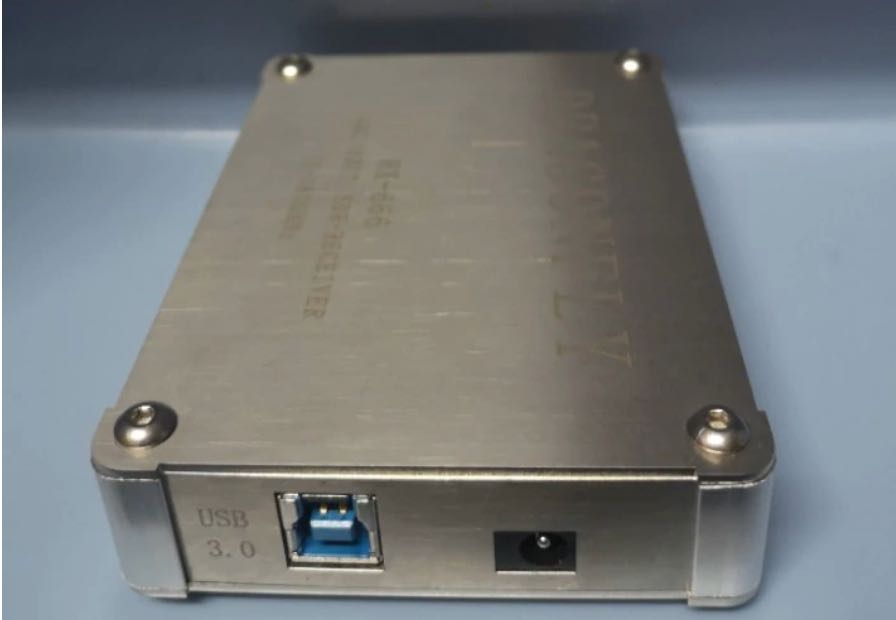I received my new RX888 SDR receiver today, via DHL shipping in only seven days from ordering on Ebay from seller “shenglongsi”. I’ve noticed that some Chinese Ebay sellers use a placeholder shipping number when choosing the DHL carrier, and then some days later they forward the actual shipping number when the product is out the door. That was the case with the RX888– four days in limbo, and then BINGO!–a real tracking number was sent and the package arrived three days later.
It should be noted right up front, as others have pointed out, the RX666 and RX888 SDRs are commercial implementations of the excellent, open source BBRF103 receiver. The BBRF103 is the creation of talented Italian designer Oscar Steila IK1XPV.
Hopefully tonight I’ll be sorting out files to get the radio operating, and if there are hiccups along the way I have help from some other early adopters around the globe.
The radio arrived with zero documentation or links to support files, but I already have files known to work with the RX666. The receiver should work with HDSDR after the correct additional files are added to the HDSDR folder, as does the similar RX666 model. Cypress USB drivers also need installation on the host computer. One concern is operating the LNA (low noise amplifier) on the RX888, which the RX666 lacks. This may take a different EXTIO .dll file than the one intended for the earlier RX666.
I’m aware of the developer of another popular SDR program who will almost certainly add support for the RX888/RX666 to his software.
I’ve read that the powerful ADC chip inside these two models is a USD ~$60-70 component (or from the same chip series) which is also found in a few commercial grade SDRs plus the newer WinRadio G33DDC & G35DDCi models. Translation? The RX666 & RX888 could turn out to be amazing performers for the price.
Below are up-close pictures of the receiver’s printed circuit board. Construction and soldering look quite good considering the USD $188 price. In my opinion the build quality appears to somewhat exceed that of the RX666, which was the first of these two units on the market.
Note that in the last photo the whitish square on the bottom of the PCB is a thick foam pad, perhaps some thermal transfer material. It is sticky-backed and placed so that it’s wedged between the bottom of the chip (ADC?) with the blue heat sink and the bottom of the case.
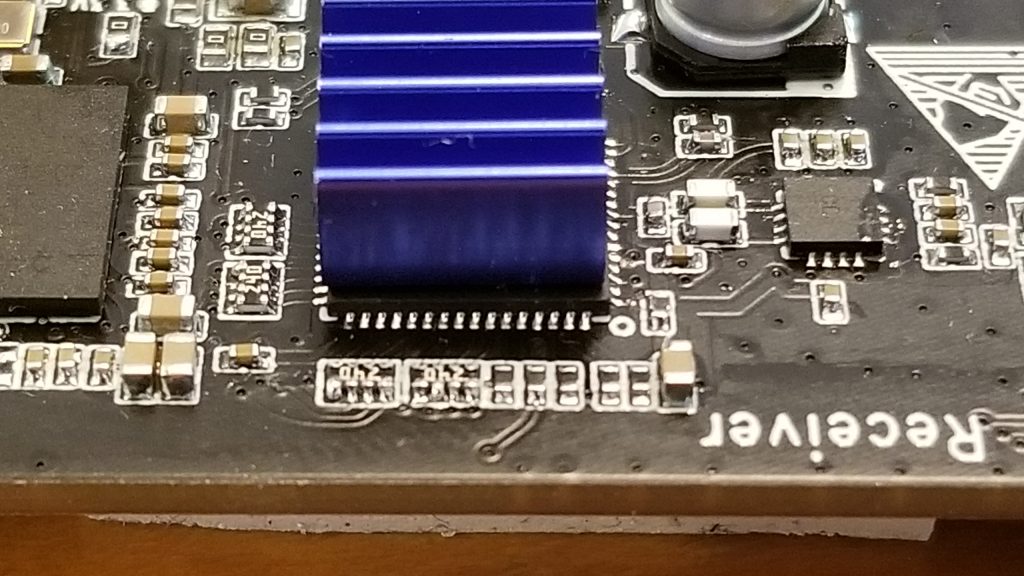 In the below photo, note the small LEDs with indications “PWR”, “MODE”, “OVLF”, and “MODE” (again). At the upper-right corner are two pads marked “RST” (reset?).
In the below photo, note the small LEDs with indications “PWR”, “MODE”, “OVLF”, and “MODE” (again). At the upper-right corner are two pads marked “RST” (reset?).
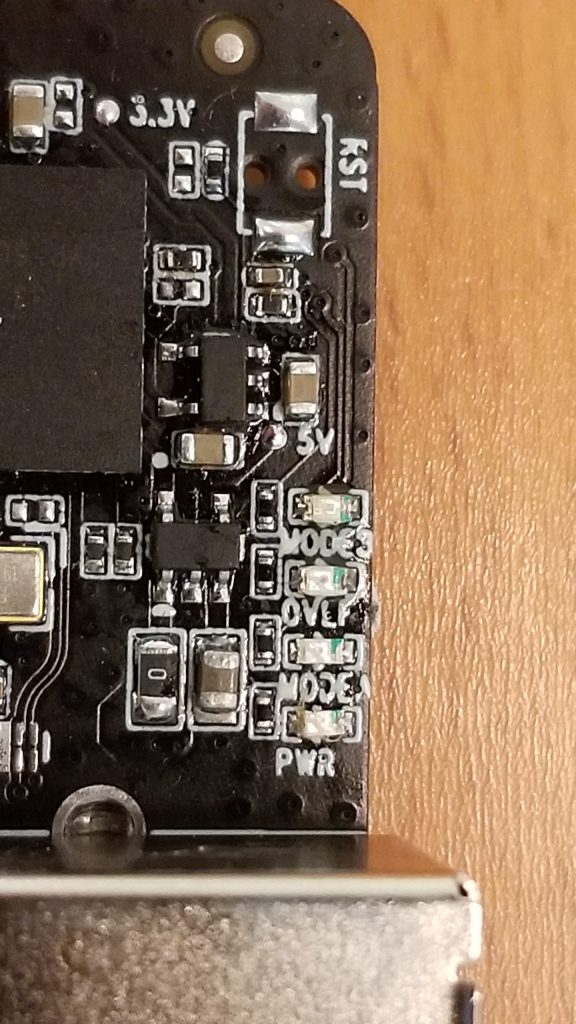
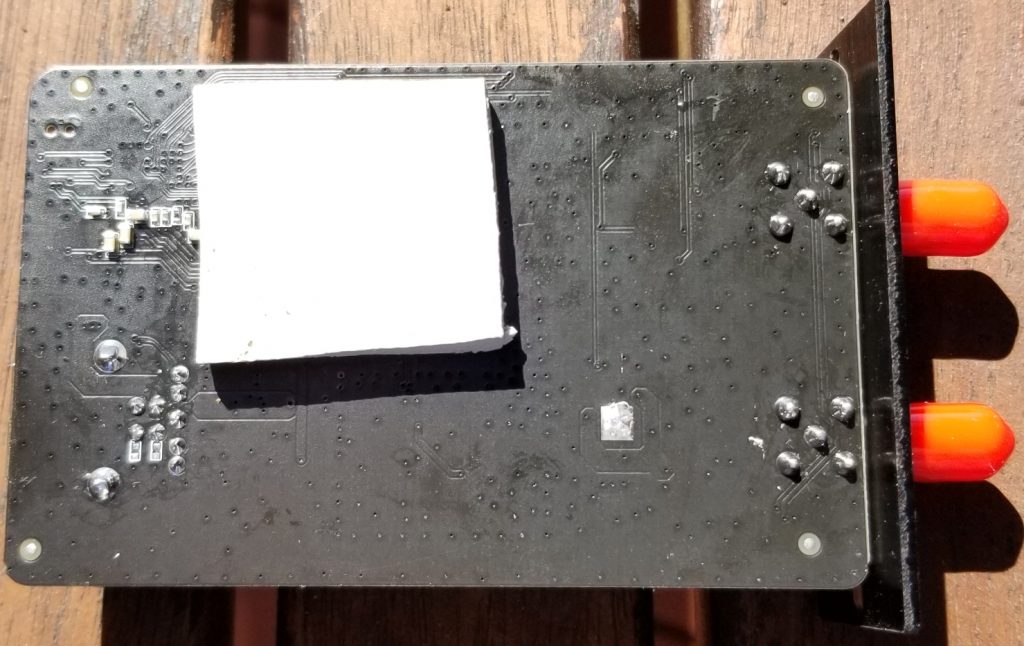
Guy Atkins is a Sr. Graphic Designer for T-Mobile and lives near Seattle, Washington. He’s a regular contributor to the SWLing Post.

